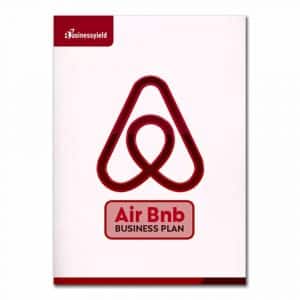The successful planning of business operations, technique and strategy implementation, marketing and sales initiatives, and other corporate undertakings are crucial to the growth and development of the organization. A lean business plan is one of the documents you will use for operational management and planning. Every firm needs a plan outlining its goals. A lot of businesses use the lean business plan template to properly strategize and examine the fundamental concepts. Problems, solutions, important KPIs, and competitive advantages are the focal points of the lean business plan canvas. This article will examine an example of a lean business plan and its benefits.
What Is a Lean Business Plan?
A lean business plan is a concise one-page document that defines your firm, business partners, business strategy, methods, and essential metrics in bullet points, tables, and charts. A flexible, lean business plan should be reviewed every month or every three months to make sure the company is moving in the right direction. Business entrepreneurs begin establishing their goals and objectives for their company using a lean business plan.
Additionally, a lean business plan, in contrast to most others, addresses a variety of firms rather than just one in particular. It is also similar to a common technique used in several business sectors to develop a business strategy that enables them to spend less and produce more while still meeting the escalating needs of their clients.
Rather than a plan or method, lean is more like a thinking style. Creating more value for their customers while also utilizing fewer resources is the premise behind a lean business model.
A business model is also a business’s financial plan. What is the element of a lean business plan?
- Schedule: The tasks and times for each employee in your company
- Plan of action for your company
- Tactics: How your company will put your strategy into practice
Why You Should Use A Lean Business Plan?
The key components of your business strategy can be developed on a single page thanks to the lean business plan template. Moreover, there are numerous advantages to using a lean business plan, including:
- It enables you to focus on your goals, including your intended audience, and potential rivals.
- Lean business plans place a strong emphasis on your value proposition in order to set you apart from your rivals and use client demands and challenges as the basis for your success.
- It concentrates on the essential factors that will make or break your company’s plan
- You can create a strategy that is simple to read and comprehend without prior business experience
- You will be able to present a picture of your business concept
- It allows you the freedom to quickly adjust your strategy
- It is quicker to produce than conventional business plans
What Should A Befitting Lean Business Plan Contain?
The overview of your company and your business strategy is often just two of the many components of a lean business plan. On the one page that constitutes your lean business plan, each piece is given its own box. More or less, a lean business plan should contain the following components:
- Competition: Who your rivals are and what alternatives your clients might use and purchase
- Costs: The primary expenses you must incur to run your firm.
- Identity: a quick synopsis of your company
- Marketing initiatives: How you plan to engage clients, your pricing strategy, and your marketing tactics
- Milestones: How you want to test and launch your business.
- Companions and important resources: If you have to collaborate with other companies to be successful
- Income sources: How will your company make money?
- sources of sales How you’ll market your goods and services to clients
- Solution: Describe your products and services and how you’ll resolve your clients’ issues.
- Your target audience
- The responsibilities you need on your team to successfully run your business.
How Do You Create a Lean Business Plan?
To write a lean business plan, take the following steps:
#1. Identify your Industry
Give a succinct, high-level overview of your company to begin. Write one phrase describing the work that your company does. Your response should also center on the value you offer and how you differ from the competition.
#2. Select your Issue and Approach.
Describe the issue you want to help your consumers with. Detail the problem that clients are experiencing in a few phrases or bullet points. After you’ve identified the issue, explain how your solution meets the demand that the issue causes.
#3. Identify Your Target Market and Rivals.
Determine your target market based on your solution. Describe your ideal client by concentrating on their primary characteristics or traits. Make a brief list of your top competitors using bullet points, taking into account the other options that customers may have when searching for a product like yours.
#4. Select a Marketing Strategy for your Company.
Specify the business strategies you’ll employ to make sure your business plan is successful. Start by describing the sales channels you’ll employ to market your goods or services. Make a bulleted list of the strategies you’ll employ as a part of your marketing plan to engage people and persuade them to buy your good or service. However, during this phase, it’s also crucial to think about your price and cost structure.
#5. Outline Your Budget
The success of your company must be supported by the business model you select. Make a simple financial estimate and budget to make sure your model and strategy are sound. You can also make a bulleted list of the ways you’ll earn money and a list of your main priorities.
#6. Decide on Success Indicators
To give your business strategy a timeframe, decide on success goals. The fundamental task description should be written, the task owner should be assigned, and each task should have a deadline. For instance, building a new website or creating a more detailed budget might be a milestone.
#7. Identify the Materials You Require.
Establish the resources you’ll need for success, including any necessary team members and potential partnerships. Make a list of everyone who will assist you in running your firm and give each of them a role or title.
Also make a separate, bulleted list of any companies or groups you might have to collaborate with, such as distributors or suppliers.
#8. Request Feedback
Ask reliable business partners, family members, or friends to review your lean business plan to determine whether they find it logical. You can also inquire about their opinions and make sure they understand. As the plan is only one page long and was made to be easily amended when necessary, you should only need to make minor revisions based on their feedback, if there is any.
Benefits of Lean Business Plan
- It is quicker: Each section of the plan has summaries rather than extensive descriptions of the processes. As a result, you save time by making it a quick process that you can do in a few minutes.
- It enables you to keep current: It’s adaptable, making updates simpler. Your objectives and plans must be adjusted as your firm grows.
- It is brief: Conventional company plans are frequently overly complex for their own good, making it difficult to understand them and derive useful conclusions. But, a lean business plan is more concise, logical, and straightforward.
Lean Business Plan Template
A lean business plan template is a document that has the essential information for a lean business strategy already outlined. The strategy is also made simpler by using a lean business plan template. There isn’t much writing or formatting needed for this one-page template. Rather, it breaks down each section of your business plan into a separate box with a few quick notes that you may edit or amend as needed
As they can assist you with your assignment, a lean business plan template is an excellent resource to employ while writing a lean business plan. It can also be visualized as a blank-filled document.
Here are some reasons why it is truly a very helpful tool.
- The process of generating a business strategy is quick and simple.
- You don’t need to start from scratch every time you need a new document. That allows you to save a lot of time.
- The lean business plan template is simple to use.
- You can quickly adjust the template’s sections or parts that you don’t require or wish to change.
- They can be found online in many different varieties on numerous different websites.
- The templates can be used for study or as a guide when creating your own.
- You won’t pay anything to download the lean business plan template that you desire and need.
Lean Business Plan Example
Here is a sample lean business plan that you may use to get started:
- Identity: We provide [item or service] for [your particular clients].
- Problem : [Explain in one sentence the issue you’re attempting to resolve.]
- Solution [A succinct description of [In one phrase, describe the approach you will take to solving the issue.]
- Market segment
- certain market segment
- Competitors
- Sales channels Competitor Competitor Competitor We will use [main sales channel] to distribute to our clients. Additionally, we will sell through [secondary sales channel].
- advertising initiatives
- marketing ploy
- Revenue
- income stream
- Stream of income Expenses
- essential cost
- Milestone (Person accountable, date of deadline) (Person responsible, date of deadline)
- Team
- Name: Position in the Company
- Name: Partners and resources for the role in the company
- Organizational Partners
Example of a Lean Business Plan on a Retail Store
When creating your own, follow the example of a lean business plan as a model:
#1. Identity
We provide top-notch children’s wear and accessories for all children.
#2. Problem
Purchasing wear without much prior fashion experience might be challenging.
#3. Solution
Clotwear is a friendly location where children can get beautiful and durable clothes that they deserve befitting their size.
#4. Market segment
- Young families with children
- Children of different ages and gender
- Expecting parents
#5. Competitors
- Large-scale retailers
- Online store suppliers
- Local cloth stores
#6. Channels of sales
We offer our durable wears and accessories for sale to our clients through our wear shop. We’ll also conduct business online.
#7. Advertising initiatives
- Create a website and a presence on social media
- Promote a costume drama show at a school grand opening.
- Promote children shows
- Get in touch with local stores
- Support open-mic events
#8. Revenue
- Shirts, skirts, trousers.
- Unrelated accessories
- Charges for defective wears
#9. Milestone
- Rent
- Utilities
- Insurance
- Payroll
#10. Income Cost
- Make a budget for the first quarter
- Look up store locations
- Website and social media development
- Make a list of potential advertising campaigns
#11. Team
- Owner: Peter Clot
- Manager of a store: Stella Fog
- Business consultant: Rodet Sor
- Resources and Partners for Investors: Rosella Brown.
Lean Business Plan Canvas
The lean business plan canvas is a tool for business modeling designed to assist in breaking down a company idea into its most important and dangerous assumptions. The lean business plan canvas, which is heavily influenced by the lean startup process, acts as a tactical roadmap to help entrepreneurs move from ideation to creating a successful startup.
Ash Maurya created the methodology as an adaptation of Alexander Osterwalder’s Business Model Canvas, which is the most widely used modeling canvas in the world. Like the Business Model Canvas, Lean Canvas is made up of nine basic blocks. However, in the lean business plan Canvas, these blocks’ names and functions have been changed, and are arranged logically, starting with your customer’s concern.
Example of Lean Business Plan Canvas
#1. Problem:
There must be demand, or at least one clearly defined problem, in order to sell a solution (whether a good or a service). This is because Your business’s goal is to find solutions for each of the difficulties that each of the consumer segments you specify has. Over this construction block, you will construct your entire painting. Therefore, this section must have a maximum of three priority issues.
#2. Customer segments
This may be your initial foundational element to set up. Because figuring out who your customers are will likely be the first step in understanding your business. After all, you can only identify the issues you plan to address when you are familiar with the people who are experiencing them.
Therefore, if there are multiple consumer segments, you need to create a different canvas for each.
#3. Unique Value Proposition:
This section explains how your company differs from the competition and what benefits your customers will receive exclusively from you and no one else’s product or service. List the unique selling points of your brand so that customers understand why they should choose you over your competitors.
#4. Solution
Now that you are aware of the issue and who is responsible for it, it is time to provide a fix. It must represent the minimal set of features and functionalities (also known as an MVP) that you need to deliver the value proposition from the preceding block.
#5. Channels
In this case, you must disclose the methods you will employ to communicate with your target audience. This covers all marketing, communication, and distribution channels—both traditional and digital—that you plan to use.
#6. Revenue streams
Your offer’s price and chosen payment method are both crucial components. That could indicate the outcome of your business endeavor.
#7. Cost Structure:
Compile all the expenses necessary for you to be able to sell your goods in this section. All costs, including those for research and development, monthly fees, and salaries, should be listed.
#8. Key Metrics
It is essential that you learn the metrics you will use to assess the performance of your company. You can only keep an eye on the team’s progress toward the goals in that way.
#9. Feedback
Ask your staff what makes this company’s product or service unique. Possibly the hardest question on the entire canvas is this one. The solution must be something that is distinctive in the market and cannot be imitated, duplicated, or bought. It’s difficult, but it’s important, especially if you want to use the canvas to draw in partners and investors.
You may have also observed that we are only discussing nine blocks, which is extremely objective. Consequently, it concerns a modeling approach that any business can use.
The Advantages of Lean Business Plan Canvas
The lean business plan canvas has additional benefits outside of of its succinctness and objectivity, including the following:
#1. It Concentrates on the Solution
Lean Canvas allows the stakeholders to alter their attention on the relationship between the problem and the solution, especially in comparison to complex standard business plans. The hypotheses are now clearer and simpler as a result.
#2. Pleasant User Interface
All team members are encouraged to participate in the creation and realization of ideas by using this one-page canvas. Additionally, there is intentionally limited space, which forces the analysis to be condensed to its most basic components while excluding irrelevant and inconsequential data.
What Is the Format of a Business Plan?
There isn’t actually a set format for a successful business plan presentation. Depending on the type and scale of the firm in question as well as the focus placed on particular crucial areas relative to others, business plans differ in substance and size.
Every business plan needs to cover a few key topics; otherwise, it wouldn’t be effective. These problems can be categorized. They also serve as the cornerstones of all commercial endeavors, big or little. Which are:
- Operations in Sales and Marketing
- Finance Human Resources
- Technologies of Information & Communication (ICT)
- Information Control
The structure gives you a foundation for articulating your ideas, concepts, and tactics in a way that is logical, consistent, and coherent. In other words, the business plan structure enables you to express your ideas to others in a straightforward and concise manner.
What Is a Lean Startup Methodology?
A lean startup is a strategy used to launch a new business or a new product on behalf of an already-existing business. Additionally, The lean startup methodology encourages creating products that consumers have already shown they want in order to ensure that a market will be ready when the product is released. as opposed to creating a product and waiting for demand to manifest.
What Are the 3 Steps in the Lean Start-up?
- Find
- Execute
- Validate
What Is the Importance of the Lean Business Model?
The lean business model aims to cut down on waste in operational procedures. If a company fully adopts lean principles, the anticipated results include a lower need for cash, fewer mistakes, better-quality products, and quicker client delivery. This strategy also works effectively for startups with little extra money to invest as well as for businesses looking to strengthen their competitive positions. The ideas listed below are just a few of the ideas grouped together under the broad heading of the lean business model.
In a lean firm, providing value to the client through a waste-free value-creation process is the ultimate objective. A lean company recognizes the value of its customers and focuses on essential operations to continually raise it while lowering waste. Lean thinking transforms the management model to do this, moving away from optimizing individual resources and vertical departments to optimizing the flow of goods and services across all value streams that flow horizontally across resources to customers.
Conclusion
The lean business plan is a company planning strategy. Spending time and energy on accessories and details is therefore pointless because of the lean business plan, .
The process of creating a business plan doesn’t have to be difficult or time-consuming. Using the aforementioned techniques and recommendations, you may create a lean business plan that works for your company. Your business will be up and running quickly thanks to this condensed, targeted, easy-to-revise document.
FAQs
How many pages can you use for lean business plan
Only one page is required for your lean business plan. It doesn’t have to cover everything because it will only be used as a brief summary that can be readily modified to keep the management team focused on goals and milestones.
What distinguishes the Business Model Canvas from the Lean Canvas?
Just different, that’s all. Lean Canvas places more emphasis on the customer-problem-solution relationship than the Business Model Canvas, which focuses on developing the business from a strategic perspective. The four blocks that Maurya modified in Lean Canvas from Business Model Canvas are the only thing that actually distinguishes the two tools in use.
what is business model canvas
business plan A business model is illustrated visually as a canvas, emphasizing all important strategic elements. In other words, it provides a broad, comprehensive, and all-encompassing perspective of the business’ operations, clients, revenue sources, and other factors.
Alexander Osterwalder, a Swiss businessman and consultant, originally presented the definition of the actual business model canvas, which is now widely used.
References
- LEAN PRODUCTION: Definition, Methods, Advantage & Disadvantage
- BOOKS ABOUT LEADERSHIP: Best Books About Leadership for All Management
- MANAGEMENT ACCOUNTING: A Comprehensive 2023 Guide (Updated)
- STRATEGY CANVAS: How to Make Strategy Canvas with Examples
- Business Names Ideas (50+ Free Brand Name Generator)







